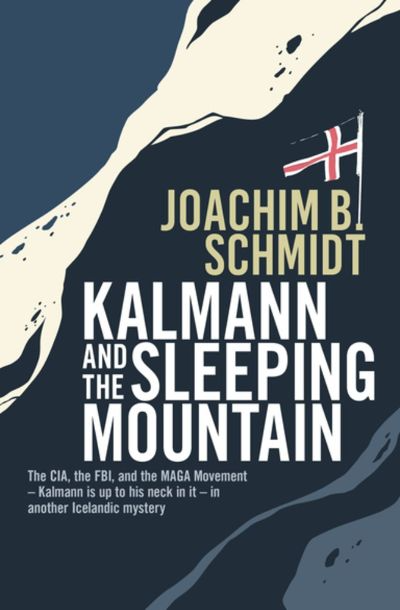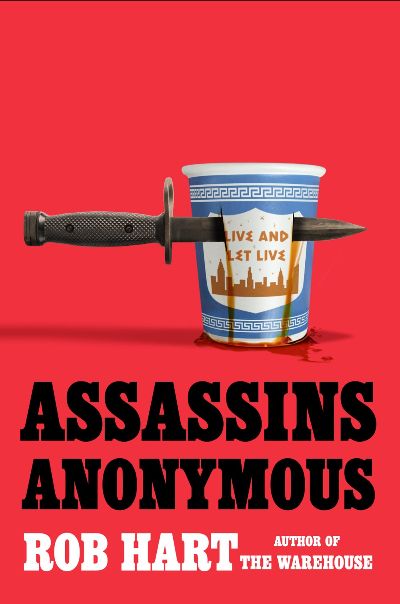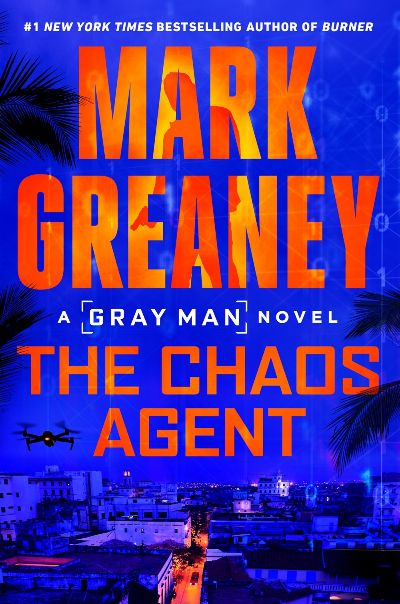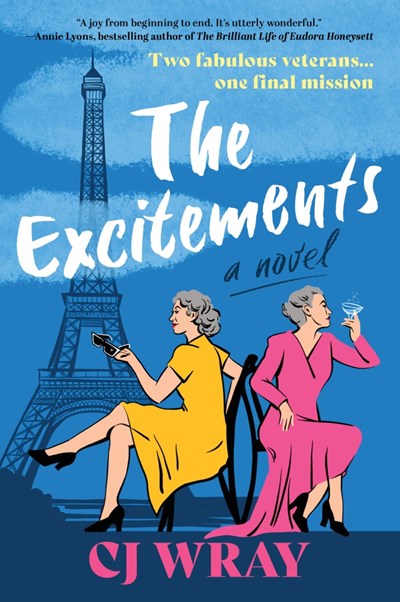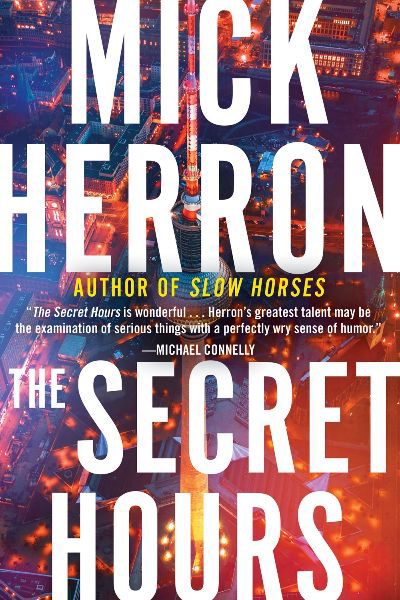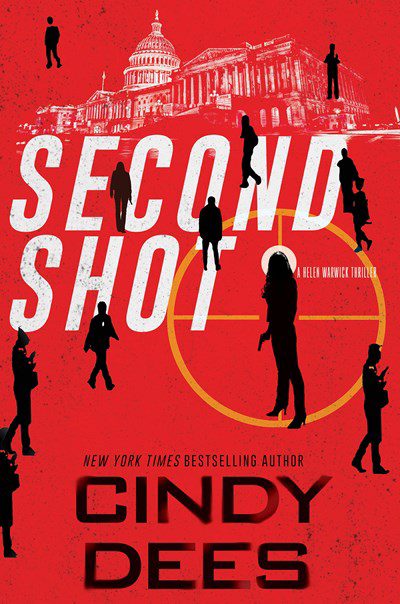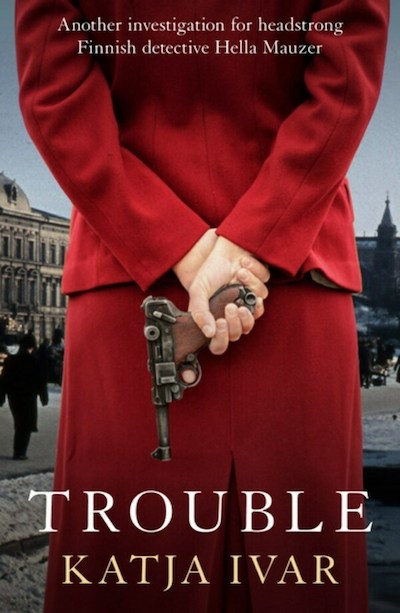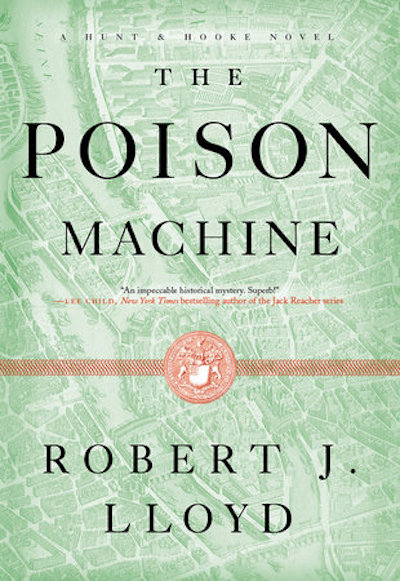In the first book in the series, Kalmann, we were introduced to our hero, a young man who’s neurodivergent—although he uses many terms to describe himself—and who works as the self-appointed sheriff of Raufarhöfn, a fishing village in northern Iceland. His world is contained—he lives with his mother, his best friend he sees only online—but his life is still fraught with dangers, from fishing on the Greenland Sea to encounters with polar bears. Kalmann remains well regarded in his village, and it is his sense of humor that often helps him survive. But in Kalmann and the Sleeping Mountain, we are stunned to find Kalmann in West Virginia, visiting his Dad, whom he has never met before, and getting swept up, along with his Dad and his MAGA buddies, in the January 6, 2021 riots in the Capitol Building. Incredible! While he is soon put on a plane back to Iceland by a kindly FBI agent, Kalmann’s world is changing. His beloved grandfather has recently died, and, Kalmann learns, he may well have been a Russian spy. Could he have been murdered in his nursing home? Another possible murder in the village, and a risky trip to an abandoned U.S. radar station with an aunt, forces Kalmann to rethink his family and village and his role in both. Both heart-rendering and hilarious, “there is no need to worry” as Kalmann famously declares. “Kalmann is in charge.”
Espionage
In this remarkable thriller full of heartbreak, humor, and bone-chilling violence, Mark—the world’s most dangerous, and best, killer-for-hire—is trying to get out of the assassin business. Known worldwide as the Pale Horse, he inspires fear among his fellow contract killers wherever he goes. But as the book opens, Mark isn’t going anywhere except for a 12-step group on Manhattan’s Lower East Side, Assassins Anonymous (he’s just received his six-month chip). And Mark has some major amends he needs to make. But at the end of an AA meeting—he’s alone, having stayed to clean up—he’s attacked by a vicious Russian assailant. Who is the attacker, and why is he pursuing Mark? The only way to find out is to track him down, and in no time, Mark, accompanied by his cat, P. Kitty, is off to Singapore then London then back to New York. Is Mark being lured back into the Agency, the organization he previously worked for? Is the attack just revenge, pure and simple? And how will he defend himself and eliminate his perpetrator—without killing him or her? A high-speed thriller that manages to burrow deeply into Mark’s past and present—and the future he dreams of. A wild and hugely entertaining ride.
Cort Gentry, the Gray Man; and his girlfriend, Zoya Zakharova, have assumed new identities while trying to live off the grid for a few months. But they can only hide for so long. A colleague of Zoya’s arrives in the Central American town where Cort and Zoya felt safe and asks her help in rescuing a Russian scientist who is one of several engineers and computer experts with targets on their backs. Shortly after the meeting, Cort and Zoya must flee to avoid the weaponized drones and army of killers sent to take them out. One of those soldiers has a past with Cort and a reputation of being as good an assassin as Cort was in his prime. The mayhem grows in intensity as the truth unveils itself; a mystery controller named Cyrus calls all the shots and does not care about any collateral damage. Greaney combines the best of special-ops novels with a dash of James Bond, and though the page length is significant, the story never bores or lags. The Chaos Agent is another winner, and whether you are a fan or new to the Gray Man, this is a blast (no pun intended).
Clear your calendar, shut off all the devices, and order in some take-out. This lovely, witty story about the two, nearly 100-year-old, Wilson sisters and their many escapades—they call them “excitements”—is that captivating. And it succeeds without an ounce of the treacly cuteness so often encountered in crime fiction featuring female nonagenarians. The sisters are well-known as World War II veterans—Josephine served in the Women’s Royal Navy and Penny in the First Aid Nursing Yeomanry—and their wartime efforts seem innocent enough. But the truth is far more complicated, and each woman has a complex history that lives on into the present. As they head off to Paris to receive the Légion d’honneur with their beloved great-nephew, Archie (why can’t he find a nice husband, they wonder?), the story moves between the present and the war years, revealing the double lives of the sisters. While the novel takes several serious turns—even if their motto is toujours gai!, cheerful under all circumstances!—it always returns to its essence: a joyous, uplifting tale that looks forward fearlessly. For readers who enjoyed Mrs. Plansky’s Revenge, Killers of a Certain Age, and The Thursday Murder Club.
Lennon, who has always played with a range of genres in his literary fiction (Broken River, Familiar, Mailman) now dips his pen into more commercial waters with the same inventive, adventurous flair. His new thriller, first in a series, revolves around twins (fraternal, not identical) Jane and Lila Pool. Thirty-five-year-old Jane leads a quiet suburban life in upstate New York, working in a dead-end administrative job at the local college, checking on her absent-minded professor father, and trying to parent adolescent Chloe despite the obnoxious interference of her disapproving mother-in-law. But her comfortable, if boring and unsatisfying, existence is turned upside down when she receives an encrypted email in the guise of spam from her long-estranged sibling. Lila has found their mother, who abandoned the girls 20 years ago, and she wants Jane to come with her to track and confront the wayward Anabel, who may or may not be a CIA agent-turned-drug-queen-pin. As the sisters embark on a whirlwind journey that eventually takes them down to Central America, alternating chapters recount the twins’ lonely, isolated childhood and teenage years as they spy on their distant and remote mother, savoring the few moments of kindness she shows them (“the marvelous, elusive feeling of their mother’s attention”), until Anabel’s final disappearance and an unexpected act of violence propel the girls on a traumatic road trip of escalating bad decisions. Along the way, readers discover who the true hard girl is. Mixing elements of a chase novel with an espionage thriller, this is also a touching story of sisterhood and motherhood in all their complications. Despite a muddled climax, Lennon’s well-written mashup of Where’d You Go, Bernadette and Thelma and Louise, but with a happier ending, will appeal to his fans and attract new readers.
It’s not all Aston Martin sports cars and martinis (“shaken, not stirred”) In Herron’s (Slow Horses) spy world. The reality is more mundane and bureaucratic in post-Brexit London, where British intelligence services have been the subject of a two-year inquiry, codenamed Monochrome and launched by a vengeful, now ex-prime minister. Thanks to the best efforts of First Desk, the agencies’ top banana, the panel headed by civil servants Griselda Fleet and Malcolm Kyle has been unable to uncover any wrongdoing. But as the probe is about to be shut down, Malcolm mysteriously receives a classified file exposing a long-buried operation in post-Cold War 1994 Berlin that ended in tragedy. How does this connect to a recent botched attack on a retired “joe” in rural Devon? Herron skillfully ties the loose threads together in a satisfying, yet melancholy conclusion that reflects upon the collateral damage caused by betrayals that are the lifeblood of espionage: “The cost of heroism—of betrayal—was high; it was the same cost, seen from opposite sides. And the same cost applied, it seemed, if you were neither hero nor traitor, but simply occupied the same neighbourhood.” Billed as a standalone, this smartly written, funny, and complex thriller is a good introduction for newbies, but fans of Herron’s “Slough House” books will recognize a few crossover characters.
DC resident Helen Warwick is ready for the quiet life now that she’s retired. Her frequent, moments-notice travel as a state-department trade specialist all but ended her marriage, and her grown children have had it, too. What they don’t know is that Helen (like author Dees) was actually a CIA operative, and all those times she was absent were because she was involved in “wet work”—killings—rather than diplomacy.
Helen is determined to put it all right and win her family back. But when she arrives at her son’s house to babysit his dog, her plan goes up in gun smoke as the windows are shot in and, oops!, she’s forced to kill intruders who themselves seem like trained killers. The unique habitat that is DC comes to life here as Helen tries to figure out who’s after her, or who else the killers may have been targeting—perhaps there’s another family member with a clandestine background?
At the same time, she’s drawn into investigating a separate case that her lawyer-son asks for her smarts on—that of the DaVinci killer, who emulates artworks with the bodies he sadistically kills (there is one VERY gory scene here). The pages fly by as Helen dashes through family spats and deadly maneuvers toward and away from killers, while enduring realistic turmoil regarding her exasperated family.
Look forward to more from this engaging, still-got-it character! This, the first in a series, ends on a cliffhanger; it will also be a TV series starring Sharon Stone.
Hella Mauzer, 29, is both very much of Finland—she’s a dour private investigator who seems made from her country’s six-months of darkness —but completely not what her fellow 1950s Finns want her to be. Put flowers under your pillow on midsummer night and you’ll dream of your future fiancé, they hint, with marriage and motherhood then all but guaranteed. Hella wants none of it. She keeps both her ex-boyfriend, who can’t grasp that things are over, and her new, interested neighbor at arm’s length while immersed in two investigations. One is a favor to her father’s former secret-police colleague: a background check on the prospective head of Helsinki’s homicide squad. The other is more personal. Hella is desperate to find out who killed her parents, sister, and nephew, all of whom died when hit by a truck when Hella was a teen. Getting the courage to read the police file on her family’s deaths is a big step, and one that immediately leads her to suspect that there was much more to the tragedy than an accident. The background check is far from straightforward either, adding up to a tale that brings to mind Game of Thrones, with all that story’s evil and power-hungry machinations. If Scandinavian mysteries are your thing, try this, as well as Ann-Helén Laestadius’s Stolen, and Joachim B. Schmidt’s Kalman for great stories that take place outside the more common urban settings in Sweden and Denmark.
This is an espionage story with a difference, featuring not a dashing ladies’ man but a young CIA operative, Melvina Donleavy, who knows her bureaucracy and sticks to it, offering an interesting look at modern-day tradecraft. Mel appears to her CIA colleagues to have no special skills, but when she’s in danger, top levels of government get involved. Readers are in on the picture, learning from the get-go that Mel has lifelong recall of every face she sees. It freaked out a middle-school crush when she mentioned having seen him at a sports event that had thousands in attendance, but when she’s sent to Byelorussia in 1990 to see if particular Iranian nuclear scientists can be spotted it’s a handy talent indeed. Mel and her colleagues are undercover, the others posing as accountants who are sent ahead of a U.S. donation to make sure none of it is earmarked for nuclear activity, she as their secretary. The stultifying Soviet observation machine moves into place, with the spies watched everywhere they go and a rigid air of we-know-you’re-spies-and-we-know-that-you-know-we-know coming off their hosts in waves. The group soon hears that a serial killer, the Svisloch Dushitel, or Svisloch Strangler, is at work in Minsk, but as its illegal to even mention the crime of serial killing, Mel has her work cut out to get to the bottom of it. Espionage, a love story, and murder mystery, all by a Department of Defense contractor assigned to the former Soviet Union in the ‘90s? Yes, please.
When Lloyd first introduced Harry Hunt in The Bloodless Boy (a firstClue starred review and a New York Times “Best New Historical Novel of 2021”), the 17th-century physicist was Robert Hooke’s assistant and the investigator of the gruesome murders of London boys. Here Hunt’s fortunes are doing both worse and better. On the glum side, we see his humiliating failure to replace Hooke as Curator of Experiments at the Royal Society for the Improving of Natural Knowledge, with Lloyd’s almost-tactile picture of academic politicking giving the book a strangely modern feel. Hunt still finds prestigious work though: when the skeleton of a dwarf is found, Queen Catherine requests Hunt as investigator. Captain Jeffrey Hudson was “her” dwarf, and Hunt is tasked with finding out both who killed him and who the still-living man is who claims to be Hudson but is taller. The physicist’s urgent work this time (“the body will not keepe”) takes him far from the Thames shores he clung to in The Bloodless Boy. France is a major setting in the book and a final lengthy and very exciting scene takes us to the Queen’s Catholic Consult, where restrictions against the much-loathed group will be discussed. Lloyd again succeeds in creating an immersive look at the various layers of life his hero encounters, one that draws enough on real events to treat readers to intriguing history, but that also adds just the right fictional elements to keep the plot rich. Another winner

